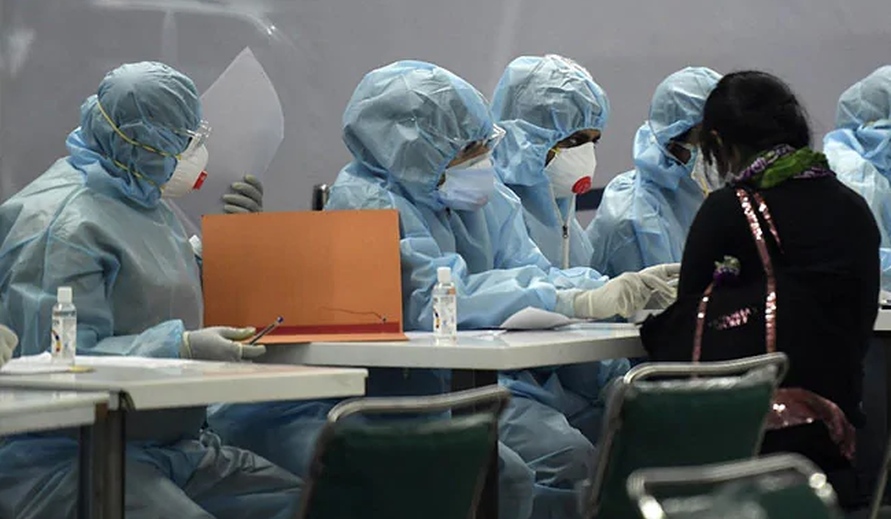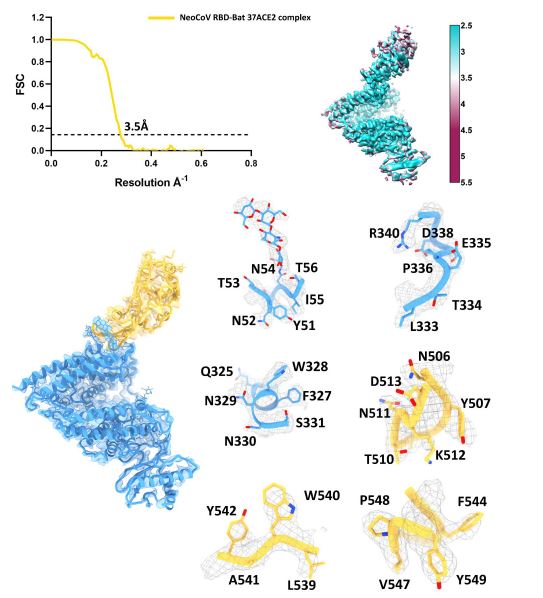Wuhan scientists discover new ‘NeoCov’ virus strain that is deadlier than covid-19; one in three infected people die from the virus

Key Points
• Chinese scientists from Wuhan, China have discovered a new strain of coronavirus called NeoCov.
• The scientists warned that the NeoCov strain has a high death and transmission rate of Middle East respiratory syndrome MERS-CoV (where one in three infected people die on average) and has a 35% fatality rate.
• The strain was first found in bats and it’s not known to affect humans yet but scientists warned that the virus may pose a threat and jump to humans in the future.
• Studies show that the COVID-19 vaccinations may not be adequate enough to protect the immune system of people.
• The NeoCov strain is not a new variant. It was discovered in 2012 and 2015 in Middle Eastern countries and is very similar to SARS-CoV-2 (coronavirus) in humans.
On January 28, we wrote about the NeoCov strain after Chinese scientists from a well-known lab at Wuhan Institute of Virology reported they discovered a ‘potentially deadly’ new strain of coronavirus with ‘high fatality and transmission rate.’ They claimed the virus could develop a 35 percent death toll. The announcement came at a time when millions of people around the world are still grappling with the Omicron variant of COVID-19.
So, should we be concerned? According to Chinese scientists, although NeoCov carries a high mortality rate of MERS-CoV (where one in three infected people die on average) and the high transmission rate of the current COVID-19 virus, it is a bat coronavirus.
In its current form, scientists said that NeoCov does not infect humans but further mutations may make it potentially harmful. However, the scientists said NeoCov can penetrate human cells in the same way as SARS-CoV-2, the virus that causes COVID-19.
“We unexpectedly found that NeoCoV and its close relative, PDF-2180-CoV, can efficiently use some types of bat Angiotensin-converting enzyme 2 (ACE2) and, less favorably, human ACE2 for entry,” the scientists said.
In a research study published on bioRxiv server, the team of researchers claimed to have “unexpectedly” stumbled upon the new strain, which they’re calling “the NeoCoV strain.” The researchers stated that the strain was originally discovered in South Africa and is a “close relative” of omicron. Although NeoCoV strain “remains enigmatic,” the researchers warned of a “potential bio-safety threat” for humans “with both high fatality and transmission rate.”
“We identified a molecular determinant close to the viral binding interface that 25 restricts human ACE2 from supporting NeoCoV infection, especially around residue Asp338. Conversely, NeoCoV efficiently infects human ACE2 expressing cells after a T510F mutation on the receptor-binding motif (RBM). Notably, the infection could not be cross-neutralized by antibodies targeting SARS-CoV-2 or MERS-CoV. Our study demonstrates the first case of ACE2 usage in MERS-related viruses, shedding light on a potential bio-safety threat of the human emergence of an ACE2 using “MERS-CoV-2” with both high fatality and transmission rate.”
The news of the new NeoCoV strain came shortly after another team of Chinese scientists published new research claiming that the omicron strain may have gestated inside mice. This other team has warned about the “potential bio-safety threat” represented by a new strain of COVID. As part of the study, the researchers said:
“We unexpectedly found that NeoCoV and its close relative, PDF-2180-CoV, can efficiently use some types of bat Angiotensin-converting enzyme 2 (ACE2) and, less favorably, human ACE2 for entry. The two viruses use their spikes’ S1 subunit carboxyl-terminal domains (S1-CTD) for high-affinity and species-specific ACE2 binding.”
The strain was first found in bats but scientists warned that the virus may pose a threat and jump to humans in the future. However, the World Health Organization (WHO) urged everyone to exercise caution and not to jump to conclusions. WHO said further studies would be required to ascertain if NeoCov coronavirus poses a threat to humans.
It is worth noting this is not the first new strain to emerge since omicron was first discovered by a team in South Africa. On January 8, Cyprus reported a new covid-19 strain called “deltacron.” Unlike previous strains, deltacron is a mutant with attributes of both Delta and Omicron.

However, cryo-electron microscopy analysis of the new NeoCoV strain revealed a novel coronavirus-ACE2 binding interface and a protein-glycan interaction, distinct from other known ACE2-using viruses,” the researchers said.
In addition, the new strain “can efficiently use some types of bat Angiotensin-converting enzyme 2 (ACE2) and, less favorably, human ACE2 for entry.”
While the strain presently targets bats, the scientists said it has the capability to infect humans as well. And should that happen, it appears the new strain “could not be cross-neutralized by antibodies targeting SARS-CoV-2 or MERS-CoV” meaning natural immunity and vaccine-induced immunity would likely be powerless to stop it.
Below is the full paper.
2022.01.24.477490v1.full
